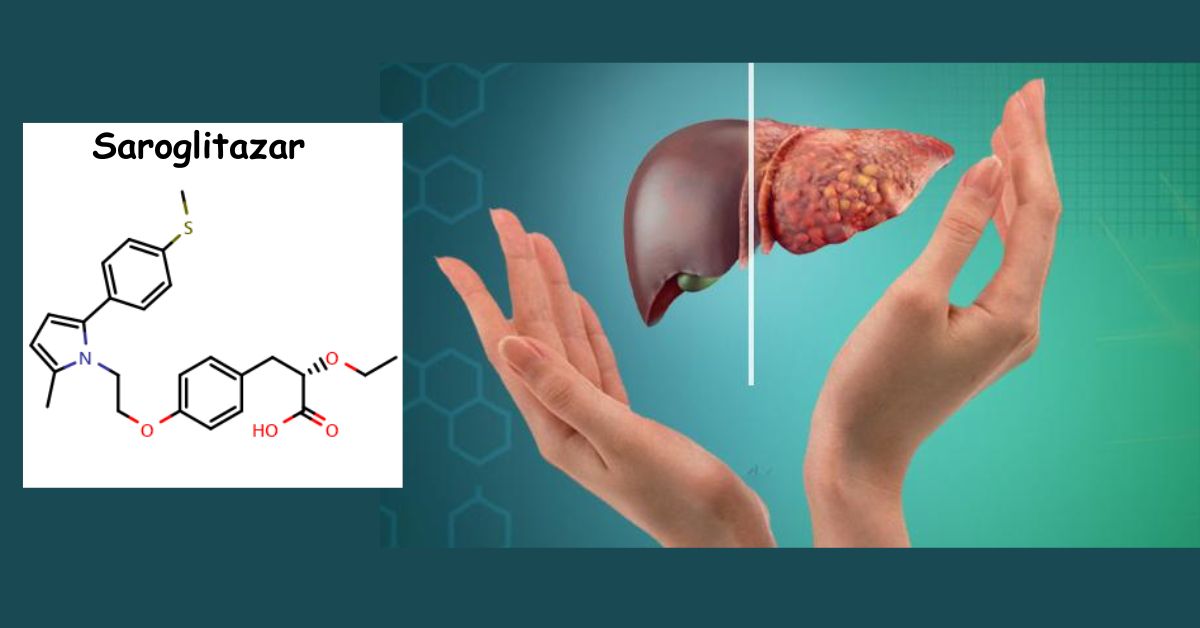New treatment for Fatty liver/NASH/MASLD – Saroglitazar
FATTY LIVER/ NASH/NAFLD IS ONE THE MOST COMMON LIVER PROBLEMS BEING FACED BY OBESE/ DIABETES/METABOLIC SYNDROME PERSONS NOWADAYS AND AT PRESENT ONLY LIFESTYLE MANAGEMENT IS THE ANSWER TO THIS HEALTH CONDITION. BUT NOW WE HAVE A NEW TREATMENT FOR FATTY LIVER/NASH/MASLD – THAT CAN REDUCE FATTY LIVER TO NEAR NORMAL LIVER AND CAN PREVENT PROGRESSION TO ADVANCED STAGES OF LIVER DAMAGE/FAILURE.
Saroglitazar:
Overview and Clinical Use
Introduction: Saroglitazar is a novel medication primarily used for managing dyslipidemia and hyperglycemia in patients with type 2 diabetes mellitus (T2DM). It belongs to a class of drugs known as dual PPAR agonists (peroxisome proliferator-activated receptor agonists).
Mechanism of Action: Saroglitazar is a dual PPARα/γ agonist. It has the following effects:
- PPARα Agonism: Enhances lipid metabolism, reduces triglycerides, and increases HDL cholesterol.
- PPARγ Agonism: Improves insulin sensitivity and reduces blood glucose levels.
Clinical Applications:
- Diabetic Dyslipidemia:
- Saroglitazar effectively reduces elevated triglycerides and improves HDL cholesterol levels in patients with T2DM, addressing lipid and glucose abnormalities.
- Non-Alcoholic Fatty Liver Disease (NAFLD) and Non-Alcoholic Steatohepatitis (NASH):
- Emerging evidence suggests that saroglitazar may be beneficial in managing NAFLD/NASH due to its dual action on lipid metabolism and insulin sensitivity.
- Other Potential Uses:
- There is ongoing research into the use of saroglitazar for other metabolic disorders, such as mixed dyslipidemia and metabolic syndrome.
Dosage and Administration:
- Typical Dose: The usual recommended dose of saroglitazar is 4 mg once daily, taken orally.
- Administration: Saroglitazar can be taken with or without food. Consistent daily administration is crucial for optimal results.
Adverse Effects:
- Common side effects include gastrointestinal symptoms (such as nausea, vomiting, and diarrhea), edema, and weight gain.
- As with other PPAR agonists, there is a potential risk of fluid retention and heart failure, particularly in patients with pre-existing cardiovascular conditions.
Contraindications and Precautions:
- Contraindications:
- Known hypersensitivity to saroglitazar or any of its components.
- Severe hepatic impairment.
- Active bladder cancer.
- Precautions:
- Monitor liver function tests periodically, as with other PPAR agonists.
- Use with caution in patients with a history of heart failure or other cardiovascular diseases.
Summary: Saroglitazar is a valuable addition to the therapeutic arsenal for managing diabetic dyslipidemia and potentially NAFLD/NASH. But it’s a doctor-guided conversation, not a quick fix. Its dual action on lipid and glucose metabolism makes it particularly beneficial for patients with complex metabolic disorders. Ongoing research will further elucidate its full potential and long-term safety profile.






